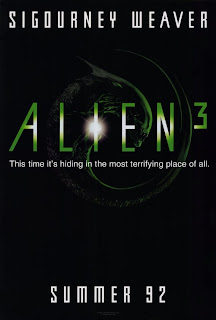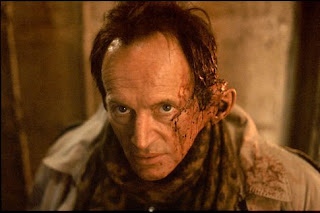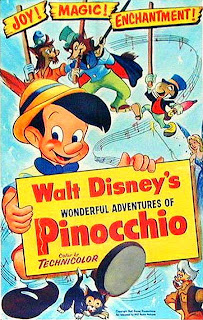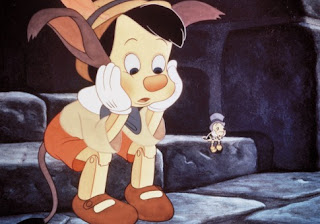 "The prettiest sight in this fine pretty world is the privileged class enjoying its privileges."
Introduction
"The prettiest sight in this fine pretty world is the privileged class enjoying its privileges."
Introduction
Every year the BFI have a 'Birds Eye View' season whereby they focus on important moments in cinema when women became fundamental in the evolution of film. Back in 2009, the season focused on screwball comedies, screening brilliant films such as
It Happened One Night, Bringing Up Baby, His Girl Friday and
The Philadelphia Story. I managed to watch a few of these, but missing out on
The Philadelphia Story, instead I hunted it down on DVD. I remain in awe of Hitchcock, Jimmy Stewart and Cary Grant - so a film that stars two-out-of-three in the same film was clearly a must-watch. With regards to Hitchcock, he beat The Philadelphia Story for Best Picture with one of his first US-based film:
Rebecca. In addition, Empire Magazine noted how JJ Abrams watches
The Philadelphia Story prior to making any of his films - I can't see much
Mission Impossible 3 and
Super 8 in here, but I appreciate the sentiment.
 Oscar Success, but No Cigar
Oscar Success, but No Cigar
This film is one, of many, from the 'Golden Era' - 1939 and through the 40's - in Hollywood. The screenplay, by Donald Ogden Stewart, won at the Oscars alongside a 'Best Actor' win for Jimmy Stewart. As previously mentioned, it was nominated for 'Best Picture' but lost out to Hitchcock's
Rebecca.
As I often find myself referring to some sort of connection to
Dawsons Creek, I’ll get this out of the way early. If I am right, Pacey named his boat 'True Love' before setting off at the end of Season 3 with Joey - sailing off into the sunset. Returning conveniently for the new school year and Season 4 of the programme. 'True Love' is also the name of the boat Tracy (Katherine Hepburn) and Dexter (Cary Grant) sailed away on for the summer after their wedding in
The Philadelphia Story.
But, much like Jen's Gram, I prefer the Frank Capra films.
The Philadelphia Story is produced by Joseph L. Mankiewicz, as opposed to any screenplay or direction from him and I would argue
All About Eve is better too. We also have Cary Grant, whom I would argue wasn't really utilised. Cary Grant can play magnificent roles - the influenced-Ross-in-
Friends paleontologist in Bringing
Up Baby, the I-take-no-shit newspaper-man in
His Girl Friday - whereas here, he simply helped out a little and only really shone in two sequences. The first was when he told Tracy his view on her 'Goddess' and 'Queen' self-image, and the second, was when he told her exactly what to say in the final sequence. Katherine Hepburn, unlike Grant, was magnificent. Her presence alone demands your attention. Despite roles in classic films such as
Bringing Up Baby, Katharine Hepburn had been deemed 'box-office poison' as the films were often commercial failures.

This was a comeback role for her, and she was well-aware of this as she accepted the film-rights from Howard Hawks. It is fascinating to see her catlike features and well-spoken, but arrogant tone of voice, matched to this role of the 'well-educated-but-vain' character.
Charm and Art
Despite Hepburns's dominance and intent, James Stewart, as Macauley Connor, was the real star - this is a character who starts off cynical and frustrated about how the Lord family lives, whilst even after an arc whereby he falls for Tracy and managing to bring himself to ask her to marry him, he is wise enough to realise why she said no to his proposal. His charm and 'artistic' attitude shows a clear insight into the mind of the working-man who strives to simply see a day, or experience the beauty of the world - such a fleeting romance with a "Goddess" woman such as Tracy Lord is an experience, but then he moves on to establish a more meaningful relationship with his photographer friend. In addition to this, Macauley Connor is supposed to strike a parallel with George Kittredge (John Howard), who is of a similar working-class background. Maybe, this is how Kittredge and Tracy first started out. Both see her as the flawless Queen, whereas Dexter is the only one who steps up to the plate and tells her how it is.
 From Theatre to Cinema
From Theatre to Cinema
An issue with many films of this period, is the clear theatrical connection. Hitchcock quite happily accepted this when making
Rope and
Dial M For Murder, the former appearing without a single 'cut', whilst the latter was released briefly in 3D, to imitate the stage. Written by playwright Phillip Barry, the problem arises in
The Philadelphia Story whereby you can see that it is based on a play – for example, the majority of the film is set within one house and I am sure more could have been made of the 'grounds' of this affluent family.
Considering Cukor had Cary Grant, and failed to truly ‘adapt’ the play technicially, you then move onto criticising the narrative, whereby the simple – almost sexist attitude – of a single, upper-class woman, surrounded by all these men begins to grate. Like Clark Gable in Gone with the Wind, do we really give a damn? If she thinks she is so special then she doesn’t need a happy ending. Possibly a bit harsh and, to give credit to the story, she doesn't get together with the pauper, instead settling for the one person who understood her initially. I would like to think of myself as more of a Jimmy Stewart rather than a Cary Grant, so I'm probably just looking out for the little guy.
Critically Referenced ... and Influential
Interestingly,
The Philadelphia Story was adapted further to become a musical in
High Society. But, only a year prior, a French-film,
Le Regle De Jeu was released. Unlike
The Philadelphia Story, The Rules of the Game – the English-language title - is more respected in critical circles, and it indeed, it does hold much more depth with regard to the allegorical nature of its plot. But it would be an interesting contrast to this. Both set within the High-class society, portraying three men of differing classes, in love with a central female character. Maybe that's an essay for a Film Studies student: Renoir's
Le Regle De Jeu VS Cukor's
The Philadelphia Story. It might not hold up though considering how close the release dates are.
At any rate, anyone interested in Classic Cinema will need to check this out.
But watch
Mr Smith Goes to Washington for better Jimmy Stewart, and watch
His Girl Friday for better Cary Grant … and watch better Hepburn with
Bringing Up Baby. And watch better George Cukor with his [uncredited] direction on
Wizard of Oz. In fact, don’t start with
The Philadelphia Story at all … watch the other films first.
This post was originally published on 14th June 2009, but it has been updated and adapted for this edition on the 'Classic Columb' for Man I Love Films
 The music
attached to a film creates the environment, I believe, moreso than the literal
environment on-screen ...
The music
attached to a film creates the environment, I believe, moreso than the literal
environment on-screen ...








































